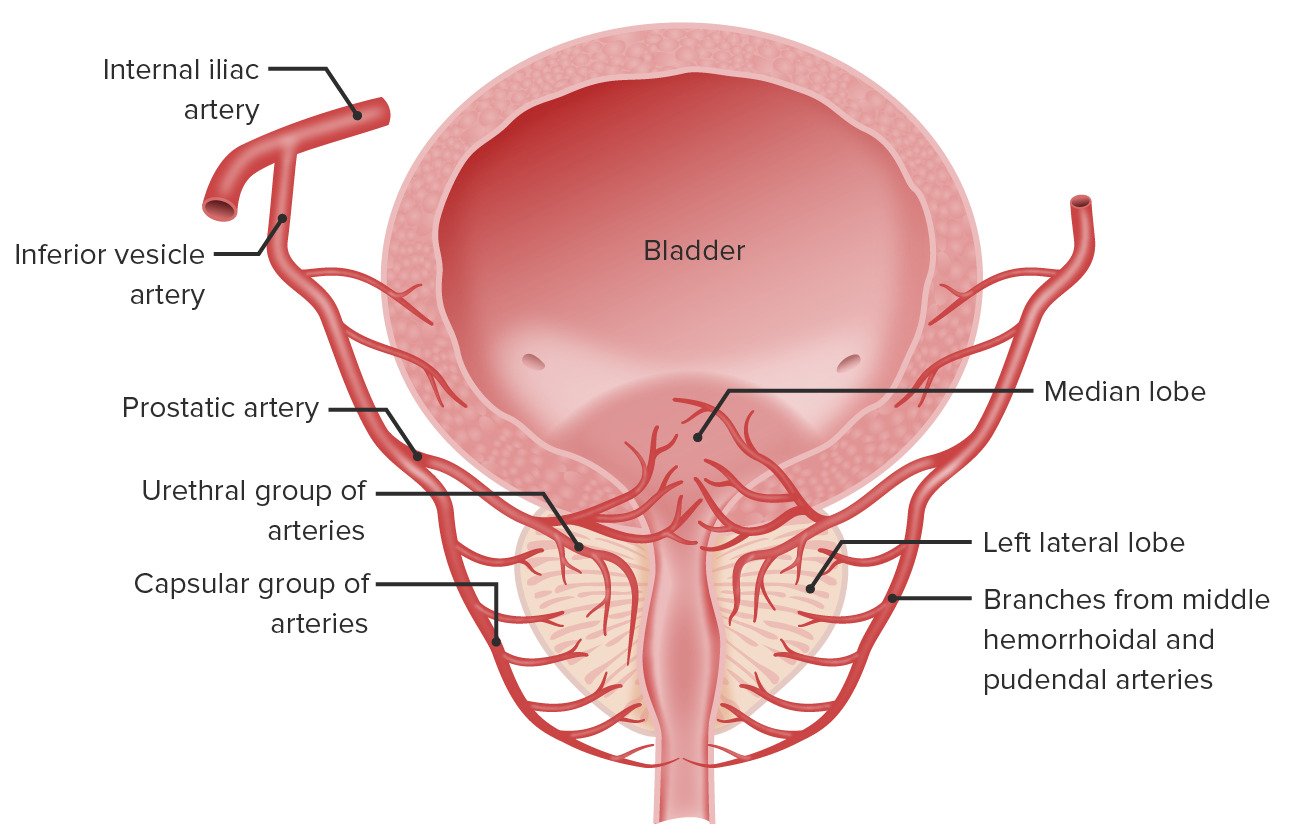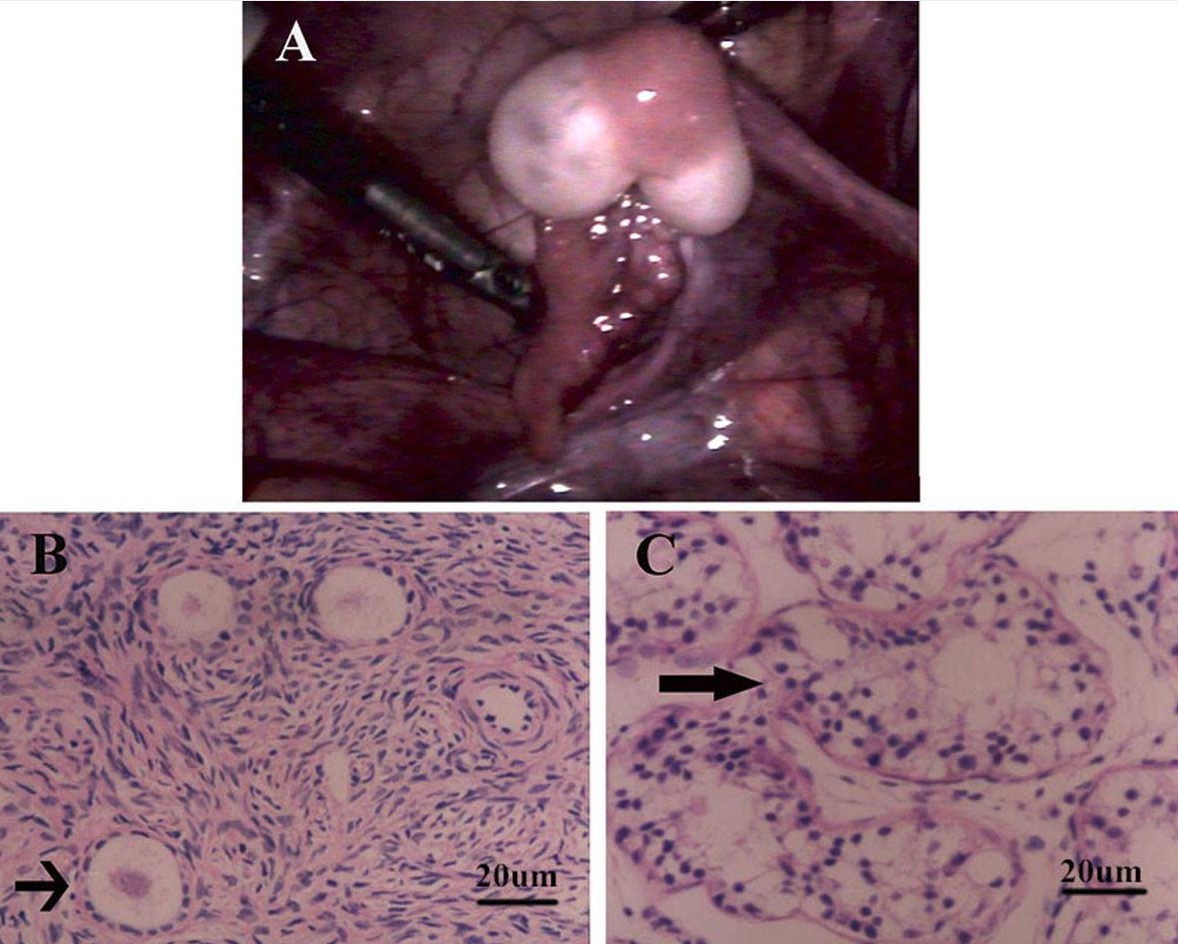Playlist
Show Playlist
Hide Playlist
Hermaphroditism
-
Slides Reproductive Pathology Differential Diagnoses.pdf
-
Download Lecture Overview
00:00 Our next topic is hermaphroditism. With hermaphroditism, we’ll talk about two major categories here. You go through the flowchart algorithm. You’ll get all your questions right. 00:13 First, we have ovotesticular disorder. We have 46 XX which is a much greater genotypic pattern than 46 XY. So most of your patients here will be of genotype 46 XX. That’s where your focus should be. Both ovary and testicular tissues are present. We call this ovotestis. 00:32 The genitalia will be ambiguous. This is hermaphroditism. On the other side, we have disorder of sex development, DSD. This is where we’ll spend a little bit more time because of the actual pathogenesis. The reason we go into this is because now you’re getting to what's known as pseudo-hermaphrodite. So what’s the difference between hermaphroditism, true versus pseudo? A true hermaphrodite will have a penis and will have functioning ovaries. 01:04 Ovotesticular disorder, very straightforward. Here, 46 XX is then referred to as your disorder sex development. Our next step would be ovaries are present, external genitalia are virilised or ambiguous due to excessive, inappropriate exposure to androgen. 01:24 So here you have a patient, a pseudo-hermaphrodite. What does that mean to you? Genotype, 46 XX, a female. 01:32 Now what happens is the fact that your patient is being exposed to tons of androgen. 01:37 Would you tell me the most common cause of CAH, congenital adrenal hyperplasia? 21 ?-Hydroxylase deficiency. With that enzyme deficiency, you’re then going to have what? Remember what you’re going to shunt, anti-reticularis, lots of androgen. A young girl will then show you ambiguous genitalia or exogenous use of androgen in pregnancy. 02:03 On the other side, we have 46 XY type of disorder of sex development, DSD. 02:11 This patient, we’ll go ahead and call genotypically male, male pseudo-hermaphrodite. 02:18 Why? Well, male pseudo-hermaphrodite, the testis are present. External genitalia are female or ambiguous. Most common cause for this will be androgen insensitivity syndrome which I’ll walk you through in great detail. Before we move on though, in this flowchart, a couple of things that I am not going to go into great detail and I’m mentioning it here because it’s sufficient for you to know. Ovotesticular true hermaphrodite, 46 XX. 02:46 Female pseudo-hermaphrodite, you pay attention, congenital adrenal hyperplasia, exogenous use of steroid in pregnancy.
About the Lecture
The lecture Hermaphroditism by Carlo Raj, MD is from the course Reproductive Hormone Disorders.
Included Quiz Questions
Which of the following characteristics of true hermaphroditism is INCORRECT?
- Have normal genitalia
- Might be XX
- Might be XY
- Have a testis
- Have ovaries
What is the MOST common form of congenital adrenal hyperplasia (CAH)?
- 21-hydroxylase deficiency
- 11β-hydroxylase deficiency
- 17α-hydroxylase deficiency
- Lipoid CAH
- None of the above
Which statement regarding pseudo-hermaphroditism is NOT true?
- Male pseudo-hermaphroditism can be caused by maternal ingestion of androgen during pregnancy.
- Female pseudo-hermaphroditism can be caused by congenital adrenal hyperplasia (CAH).
- Female pseudo-hermaphroditism involves the ovaries.
- Male pseudo-hermaphroditism involves the testis.
- Pseudo-hermaphroditism involves ambiguous genitalia.
Customer reviews
5,0 of 5 stars
| 5 Stars |
|
5 |
| 4 Stars |
|
0 |
| 3 Stars |
|
0 |
| 2 Stars |
|
0 |
| 1 Star |
|
0 |





